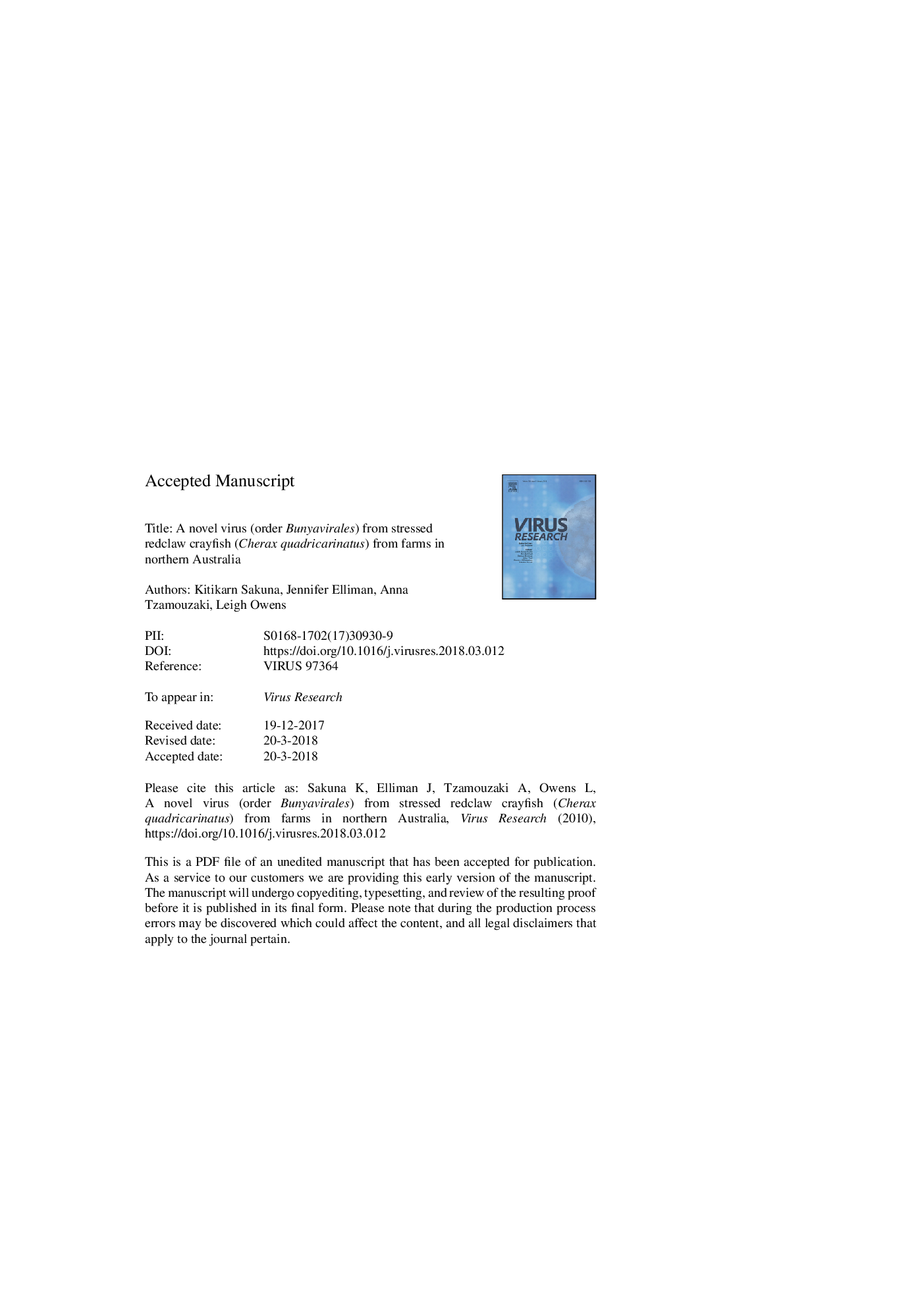| Article ID | Journal | Published Year | Pages | File Type |
|---|---|---|---|---|
| 8751790 | Virus Research | 2018 | 12 Pages |
Abstract
Athtabvirus, a bunya-like virus and chequa iflavirus infect redclaw crayfish (Cherax quadricarinatus) and they may cause mortality reaching 20-40% after about three weeks following transportation stress. Lesions were seen in the muscles of broodstock and juveniles and nerve cords of craylings. Using NextGen sequencing, the whole transcriptomes of a farmed case crayfish and a tank-reared, unaffected crayfish were assembled producing over 500,000 contigs. The average depth of reads was 18 replicates with a range from 15 to 44. The near complete sequences of the large and middle genome segments of a bunya-like virus were detected along with chequa iflavirus. The internal bunya-like motifs; RNA-dependent RNA polymerase on the L segment, and glycoprotein n (Gn) on the M segment were easily identified. In the opposite, positive-sense direction on the M segment, another presumed glycoprotein (glycoprotein c) with a low-density lipoprotein receptor (cysteine-rich) motif was identified by position specific iterated (psi)-BLASTp. The athtabvirus was related to Whenzhou Shrimp Virus 2 (Eâ¯=â¯0.0, 43% amino acid identity), an unassigned, âve sense ssRNA virus, and to peribunyaviruses (Eâ¯=â¯10â50â20). In descending order of the number of RNA copies/0.2â¯mg of tissue, the organs most heavily infected were muscle (9.4â¯Ãâ¯106), nerve cord (5.24â¯Ãâ¯106), heart (4.07â¯Ãâ¯106), gills (3.96â¯Ãâ¯106), hepatopancreas (1.58â¯Ãâ¯106) and antennal gland (6.6â¯Ãâ¯105). Given the tissue tropism (muscle and nerves) of athtabvirus and the original lesions, this virus is implicated in being involved in the mortalities in crayfish after transportation.
Related Topics
Life Sciences
Immunology and Microbiology
Virology
Authors
Kitikarn Sakuna, Jennifer Elliman, Anna Tzamouzaki, Leigh Owens,
